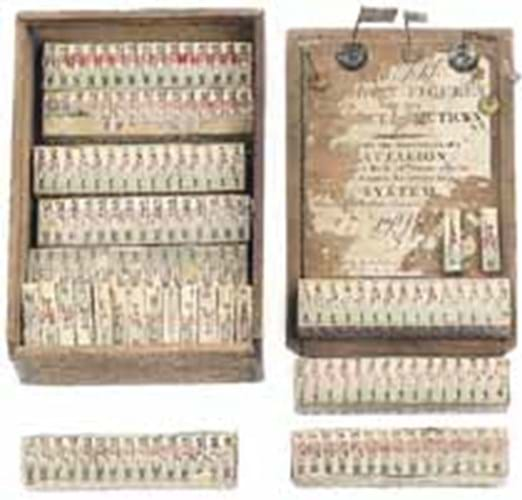
But it turned out that the massed ranks shown right were in exactly the right place among the very grown up weapons of war in Wallis & Wallis's sale of militaria, arms and armour in Lewes on June 15.
The set comprises 10 oblong wooden blocks, each 4in (10cm) long and applied with a paper strip of 15 infantrymen, as well as 20 smaller pieces depicting individual soldiers and 5 standing marker flags. Three fragile remnants of the instructions survive with it and it all fits into a wooden box with a sliding lid.
The auctioneers catalogued it as 'an interesting Geo game of military maneouvres' and suggested a date of c.1775, but the buyers, the National War Museum of Scotland, were in no doubt that what they had purchased was actually a useful educational instrument of war. Such sets featured in the training of junior British officers going to fight overseas and the blocks have pencil annotations on them suggesting they were actually put to practical use.
The torn label on the box left no clue for exact dating. The infantrymen pictured on the blocks are wearing the black bearskin caps introduced in 1778, so the set might just have been of American Revolution vintage.
However, the museum knows of a similar set in another collection dated 1797, and are almost certain that this one is also from the 1790s, in which case it is more likely to have prepared men to face the armies of revolutionary France.
The museum has a much later and more sophisticated example in its collection from the 1870s, but they have never seen one as early as this at auction. Conservation will be carried out on the set with particular attention to the brittle paper instructions.
This intriguing piece of war history sold for £800 (plus 15 per cent buyer's premium).




